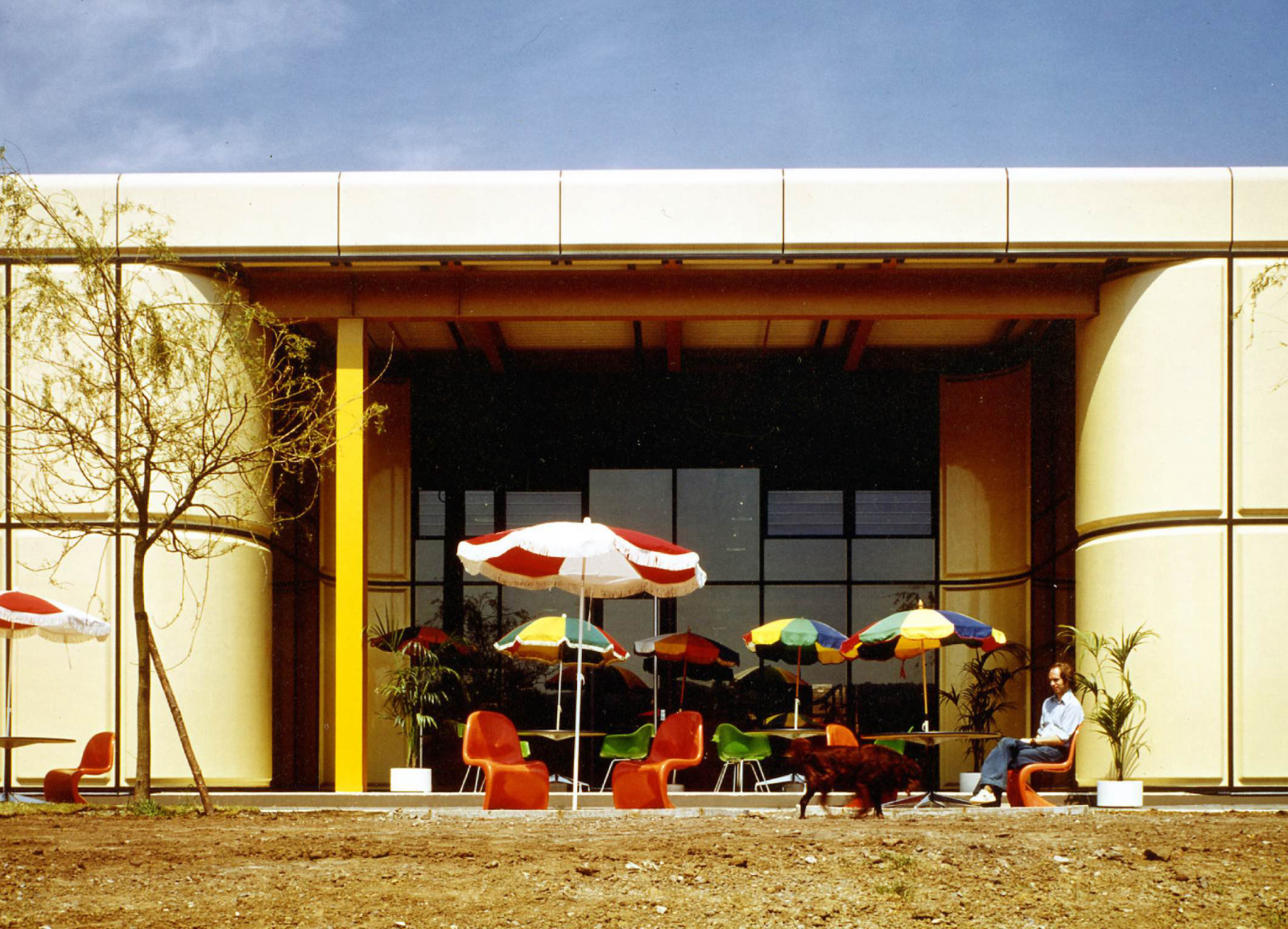This article originally appeared in Why magazine in May 2014 and is republished with permission. All images are spreads from Idea magazine, January 1969, and Icon magazine, May 2014.
In the early 1970s, as systems furniture and especially Herman Miller’s innovative Action Office were catching on, the company needed a manufacturing facility in the U.K. to serve the European market. Max De Pree, son of Herman Miller founder D.J. De Pree, took charge of selecting an architect and leading the project. He had begun to learn about architecture in the previous decade from the likes of George Nelson and Gordon Chadwick. And his family’s house in Zeeland, Michigan, built in 1954, had been designed by Charles Eames.
Max was a thoughtful businessman. His father had founded Herman Miller in 1923. He and his brother Hugh had joined the company after serving in the armed forces during World War II. These three men held definite views about their business: a respect for design, a belief in the innate worth of every individual, and a commitment to share risks and rewards with all employees. Their egalitarian beliefs heavily influenced the design of Herman Miller and Max’s thinking about the new building. The De Prees were not afraid of innovation.
Max wrote a as the brief for the new building in Bath, England. He and his team interviewed three architects. One admitted that almost all of his buildings leaked. One threatened never to specify Herman Miller products if not chosen. One connected immediately. Nick Grimshaw and Farrell/Grimshaw Partnership in London won the job. Grimshaw was not then the starchitect he has since become, and both he and Max felt a “chemistry,” as Max said later in an article in the Herman Miller publication Ideas (January, 1979). Grimshaw said in his response to the brief, “Many of the views expressed about the well-being of the users, flexibility, and non-monumentality agree very closely with the approach we have built up since the founding of our practice ten years ago. We feel particularly that any new building should not impose itself on the occupiers, but that it should be a tool in their hands.”













